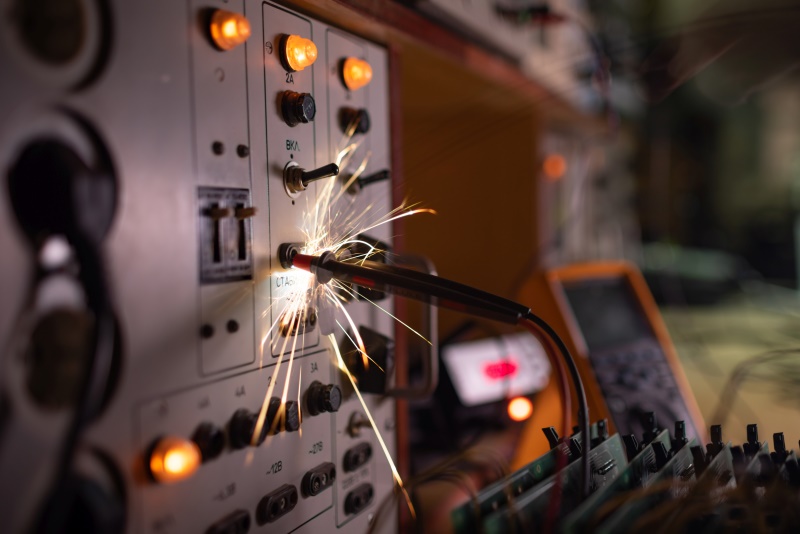

Zero
Documentation
94% Claim
Settlement (FY24-25)
Affordable
Premium
,

Buy Home Insurance Policy Online Starting ₹150/year* in India
Home insurance, also known as homeowners insurance, is a type of property insurance that provides financial protection against losses and damages to an individual's house and the assets inside it.
From your expensive gadgets and beautiful interiors to your jewellery and other valuable belongings, home insurance protects everything.
What is Home Insurance?
Home insurance is a policy that helps you cover your own home or rented apartment, as well as your personal belongings within, from unforeseen circumstances such as burglary, fire, flood, storm, and explosion.
This type of insurance is especially important for homeowners who want to safeguard their investment and ensure they are not left with significant out-of-pocket expenses after a disaster. Our Go Digit, Bharat Griha Raksha Policy will help you secure your home and valuables.
To ensure that your home is secured against burglaries as well, you can combine the Digit Burglary Insurance policy with your Home Insurance policy.
Why Do You Need Home Insurance?
Home insurance is essential because it provides financial protection against unexpected events that could damage or destroy your home and belongings. Here are some reasons why you must have home insurance:
“You Think Home Insurance Isn’t Necessary?”
If you’re still thinking so, read on…
All You Need To Know About Home Insurance

Benefits of Protecting Your Home with Home Insurance
Protecting your home with home insurance offers several important advantages that go beyond just financial coverage. Here are some key advantages:
Types of Coverage in a Home Insurance Policy
In general, the Bharat Griha Raksha policy offers three different kinds of coverage. You can select any kind based on your needs and financial constraints.
Note: In home insurance, building refers to the physical aspect of your house and contents refers to the articles and things in your house.
Types of Buildings Covered Under Home Insurance
From independent owned homes to rented apartments; a home insurance by Digit is designed to suit all types of houses.
Who Should Get Home Insurance?
Home insurance is recommended for anyone who owns or resides in a home, regardless of the type or location of the home. Here’s who should consider getting it:
Why Choose Digit for Home Insurance?
What’s Great About Home Insurance by Digit?
What’s Covered in Home Insurance by Digit?
What’s Not Covered?
Bharat Griha Raksha policy does not cover damages caused by the reasons mentioned below:
How to Buy Home Insurance from Digit Online?
Whether you’re buying your insurance policy from our mobile app or website, you can follow these easy steps and secure your home.
Visit and Select Property Type:
Go to Digit’s Bharat Griha Raksha Insurance Policy page or download the Digit App. Select your property type and enter your PIN code and mobile number.
View Prices and Enter Details:
Click ‘View Prices’, enter your plan and home building details, and choose your plan.
Fill in Personal Details:
Provide the property owner's name, mobile number, email ID, and PAN card number.
Payment and KYC:
Pay online via Card, Net Banking, UPI, Wallet, or EMI. Complete KYC to issue your policy.
Documents Required to Buy Home Insurance
When purchasing a home insurance policy, insurers typically require some basic documents for verification. Below is a list of optional documents that may be needed at the time of purchasing a policy:
Identity Proof
Address Proof
Property Documents
KYC Documents

Why Should You Buy a Home Insurance Plan Online?
Buying anything online is undoubtedly convenient and faster. For decisions as crucial as home insurance, it’s always better to have the time and peace of mind to decide on the best possible choice. Here are a few reasons why you must buy home insurance online.
You can avoid standing in long lines outside the insurer's office, interacting with representatives, or waiting around when you get house insurance online.
Forget about handling a ton of paperwork. Buying health insurance online is easy and convenient with a few clicks.
When you buy house insurance online, you have a lot of alternatives for adding extra coverage to your policy.
You can buy straight from the insurance provider, eliminating the need to pay an agent or commission.
You can easily check, select, and decide to buy home insurance online by comparing coverage, add-ons, and sum insured.
Factors that Affect Your Home Insurance Premium
Several factors influence the home insurance premium you pay. These factors help insurers assess the risk associated with insuring your property. Here are some:
- Type of Home - Your premium amount differs if you have your own property, are renting a place, or if it is an apartment or independent bungalow, or even the type of furnishing affects your premium rate.
- Location of the Building – If your home is in zones prone to disasters such as floods, fires or even in unsafe areas where crime and theft are common, it could affect the amount of premium you have to pay. Homes located in a safer society offer an economic premium.
- Age of Home - Like any other insurance policy, age is a prime factor in determining premium prices.
- Size of Home - The square ft area of your home has the highest and direct impact on your home insurance premium.
- Value of your Belongings – The value of your belongings in your home also affects the amount of premium you will have to pay. For example, if you have expensive jewellery, artefacts, expensive gadgets, etc. insuring these items is crucial. This will also directly reflect in your premium amount.
- Home Safety Measures - We’re all obsessed with the safety of our homes. So, we take various measures, such as adding a security system, to keep our homes safe. This positively impacts your premium, resulting in a lower rate.
- Additional Coverages - Some home insurance policies offer additional coverage to cover things beyond the standard plan. This consequently affects one’s premium.
Read More
Read Less
Tips to Select the Best Home Insurance Plans
When you’re deciding to buy a home insurance policy, the following are some of the important factors you can compare to choose the right plan for your home:
Why You Must Buy Home Insurance: In Coversation with Dilip Baba Neeronthiyil, Head-Underwriting, Digit Insurance

Digit makes it to the headlines!
How to File a Home Insurance Claim at Digit?
Filing a claim with Digit is a quick, simple and hassle-free process. We’ve listed out what you can do to file a claim with us:
Call us at 1800-258-5956. We will assist you in filing a claim and investigating the loss or damage as necessary.
Upload the required documents & your bank account details, on the link sent.
After verification, the approved claim amount is reimbursed to you.
Mumbai Fire Claim of ₹31.68 Lakh Settled by Digit in FY 2024 - 2025
A devastating fire at a residential property in Mumbai left the homeowner facing massive damages. With losses mounting, Digit stepped in and settled a claim worth ₹31.68 lakh, one of our highest home insurance settlements in FY 2024 - 2025.
What mattered most was how seamlessly and transparently we handled the process. From the initial claim notification to the final settlement, everything was managed with clarity, speed, and genuine support.
At Digit, it’s never just about the property; it’s about the people who make it home. 🙂
Your home is more than just walls and a roof, and it’s where life happens. 😃 From morning coffees to bedtime stories, it's the backdrop of your everyday memories. And while we can't always control what life throws at us, we can definitely prepare for it. Hence, getting a home insurance policy isn’t just a financial decision; it’s a promise to protect everything you’ve built and love.
So, whether you're a first-time homeowner or someone who's been living in the same space for years, give your home the protection it deserves.
After all, peace of mind isn’t expensive, it’s priceless.








































